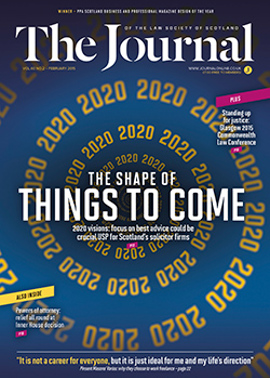Goodbye to the Lamborghini?
In March 2014, the Chancellor of the Exchequer announced radical changes to the way that individuals can access their defined contribution pension savings at retirement. From April 2015, changes to the tax rules will mean that individuals will be able to draw down their pension fund in full without the need to purchase an annuity.
Drawdown of pension income under the new, more flexible arrangements will be taxed at marginal income tax rates rather than the current rate of 55% for full withdrawals. The tax-free pension lump sum will continue to be available. The intention is to “ensure that people have greater freedom and choice over how they save money and access their pensions”.
The Pension Minister, Steve Webb, notoriously stated that individuals should be free to use their pension savings to buy a Lamborghini if they should so wish and if they later end up relying on the state pension alone, that is their choice.
However, an unintended consequence of the reforms is that the pension savings of those in financial difficulty may now be vulnerable to demands from trustees in bankruptcy.
Raithatha: income
The Welfare Reform and Pensions Act 1999 (WRPA 1999) and Pensions Act 1995 (PA 1995) changed the way that pensions were treated in bankruptcy. Until recently, the established view was that pensions which are not in payment could not be accessed by a trustee in bankruptcy (subject to the possibility of challenging excessive contributions).
In the widely criticised case of Raithatha v Williamson [2012] EWHC 909 (Ch), a bankrupt, Mr Williamson, argued that he was not entitled to any payment in the nature of income until he elected to draw it. Until he elected to draw his pension, all he had was a right to make that election. It was therefore excluded from the bankruptcy estate by s 11 of WRPA 1999; the courts could not compel him to draw his pension under s 310(7) of the Insolvency Act 1986 (IA 1986). The English High Court rejected this argument, and by effectively treating the undrawn pension fund as income, the trustee in bankruptcy was granted an income payments order (IPO) and allowed access to Mr Williamson’s £1 million pension fund. The case was appealed, but the appeal settled. The case potentially opened the door to trustees in bankruptcy seeking access to an individual’s uncrystallised pension fund.
Horton: no income
However, in December 2014, in Horton v Henry [2014] EWHC 4209 (Ch) the English High Court, despite the case being indistinguishable, declined to follow Raithatha and ruled that an IPO could not be granted to the trustee in bankruptcy in respect of the bankrupt Mr Henry’s uncrystallised pension fund. Mr Henry was entitled to draw his pension from his three personal pensions and self-invested pension policy (SIPP), but he chose not to do so. The court, recognising the difference between crystallised and uncrystallised funds, noted that to draw down his pension, Mr Henry would have to make a number of decisions and elections, and unless and until these were made the fund was uncrystallised, uncertain in value and no entitlement to payment had arisen. Therefore, the undrawn pension fund did not constitute income in terms of s 310(7) of IA 1986, nor did it form part of the bankruptcy estate.
On the basis of this ruling (which might be seen as more in sympathy with the protections introduced by the WRPA 1999 and the PA 1995), uncrystallised funds would appear to be safe from the trustee in bankruptcy because of the active steps and various elections that would require to be made by the individual before access would be granted. The imminent changes to the way individuals can access their defined contribution pension savings at retirement mean that these decisions and elections will increasingly be required to draw down pension. However, post-April 2015, where individuals have elected to draw down their entire fund and subsequently become bankrupt, they could lose their entire fund to the trustee in bankruptcy.
With two conflicting cases at the same level, it is hoped that the Court of Appeal will soon have an opportunity to rule on which of these decisions is correct. In the meantime, we will watch with interest as developments unfold over the coming months.
In this issue
- Supreme Courts: the US and UK compared
- Taking farmers to market
- Queuing up for Street Law
- Cash for your body
- Ivor Guild: an appreciation
- Reading for pleasure
- Journal magazine index 2014
- Opinion: Waqqas Ashraf
- Book reviews
- Profile
- President's column
- More benefits from development plan approval
- People on the move
- On track for 1 April
- In five years' time...
- Glasgow 2015: the three Rs
- Powers of attorney: the Inner House decides
- Freelancing goes mainstream
- Socially acceptable?
- Searching questions
- Separation and the stored embryo
- Effect, not cause: is obesity a disability?
- Goodbye to the Lamborghini?
- Scottish Solicitors Discipline Tribunal
- The dispute resolvers
- Take care with Lender Exchange
- Law reform roundup
- From the Brussels office
- Equal pay: a professional imperative
- Are you a cyber risk?
- Ask Ash
- Property in the spotlight
- Sweet smell of added value
- Legally IT: the evolving lawyer






